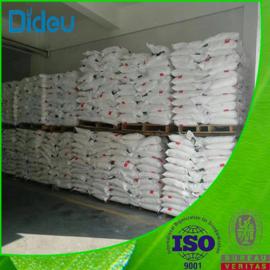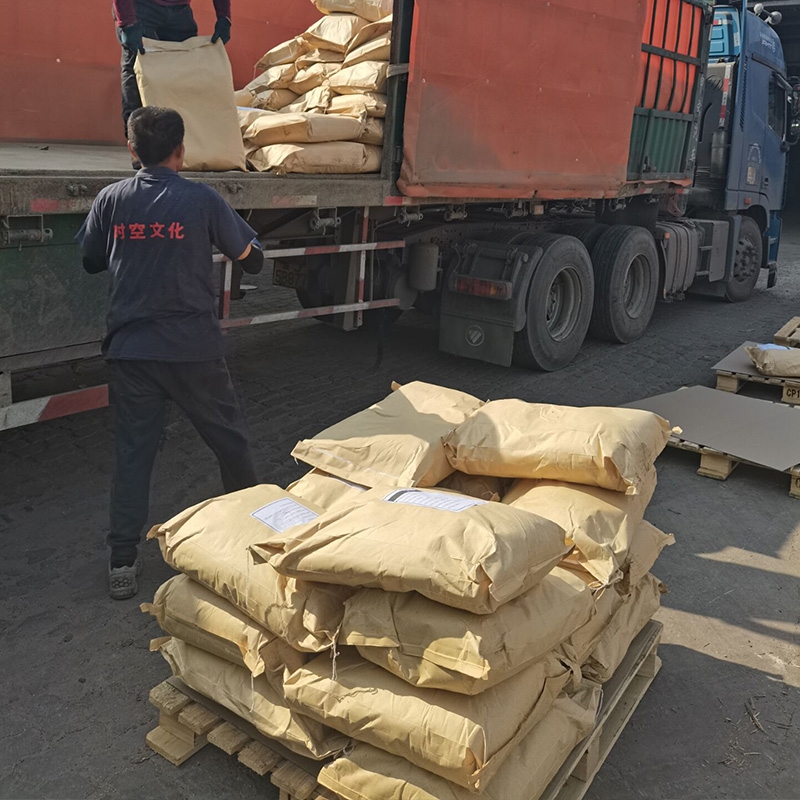-
Categories
-
Pharmaceutical Intermediates
-
Active Pharmaceutical Ingredients
-
Food Additives
- Industrial Coatings
- Agrochemicals
- Dyes and Pigments
- Surfactant
- Flavors and Fragrances
- Chemical Reagents
- Catalyst and Auxiliary
- Natural Products
- Inorganic Chemistry
-
Organic Chemistry
-
Biochemical Engineering
- Analytical Chemistry
-
Cosmetic Ingredient
- Water Treatment Chemical
-
Pharmaceutical Intermediates
Promotion
ECHEMI Mall
Wholesale
Weekly Price
Exhibition
News
-
Trade Service
"Safety with Medicine" is a humanistic case collection project cooperating with Beijing Chen Jumei Public Welfare Foundation and Yimaitong
.
The
series of interviews with physicians in urology will focus on the field of prostate cancer, and discuss the path of standardized diagnosis and treatment of prostate cancer based on real clinical needs.
and the significance of whole course management to clinical patients, highlighting the research spirit and professional quality of urological oncologists
.
The
introduction of this issue is restricted by the popularity of early screening and diagnostic technology.
The proportion of newly diagnosed advanced prostate cancer patients in China is relatively high, and the treatment options for patients are limited.
Limited, the 5-year survival rate is far lower than that of European and American countries
.
In recent years, the popularization of screening, the emergence of new diagnostic technologies and the improvement of the accessibility of new treatment methods have brought more choices for the clinical diagnosis and treatment of prostate cancer, and also provided more options for advanced patients.
Bringing more hope
.
In this interview, Professor Tang Qi, deputy chief physician of the Department of Urology, Peking University First Hospital, was invited to introduce the application of new imaging technology in the clinical diagnosis and treatment of advanced prostate cancer, as well as the accurate diagnosis, staging and stratification.
The impact of prostate cancer diagnosis and treatment, in addition to the new challenges faced by urologists
.
Expert profile Professor Tang Qi, deputy chief physician of the Department of Urology, Peking University First Hospital, Peking University Clinical Medicine, University of Manchester, UK Clinical Genetics and Genetic Counseling The 6th batch of "group->
.
He pointed out that in the early years, nearly half of prostate cancer patients in China had metastasized at the first diagnosis, with a low 5-year survival rate and a poor prognosis.
However, in recent years, the diagnosis rate of prostate cancer in China has been greatly improved, especially in first-tier cities such as Beijing, Shanghai and Guangzhou.
In clinical practice, there are more and more cases in relatively early stages, which indicates the progress of clinical diagnosis and treatment technology and the continuous improvement of people's awareness of early screening
.
At the same time, the development of new imaging technology marked by prostate-specific membrane antigen (PSMA) has promoted the emergence of radioligand therapy, and in-depth clinical research on molecular typing and gene mutation types of prostate cancer has also promoted gene-targeted therapy.
drug development
.
Professor Tang Qi mentioned in particular: "Whether it is new imaging technology or genetic testing, it is conducive to more accurate diagnosis and treatment, which is also the progress of clinicians in precision treatment in recent years
.
" Detection provides a reference for the treatment of recurrence and advanced prostate cancer.
Professor Tang Qi pointed out that biochemical recurrence is a special concept in the field of prostate cancer treatment.
At this time, traditional imaging examinations cannot detect lesions, and patients only show abnormal biochemical indicators
.
The specific tumor markers in the past provide opportunities for early intervention, and the emergence of more efficient and accurate PSMA marker detection technology will further help the clinic to identify recurrence earlier in the case of low PSA, and assist clinical progress in a more timely manner.
intervention, which is also the early clinical application of this technology
.
At the same time, PSMA marker detection can also provide more accurate tumor staging, identify small lesions, and guide the implementation of local treatment more precisely
.
Professor Tang Qi also believes that this type of technology may also affect the existing evaluation system in the future, and refine the risk stratification of patients in the first diagnosis and advanced stages, which will help clinical selection of more targeted treatment options
.
However, Professor Tang Qi also mentioned that due to the high cost of PSMA testing at present, it is not realistic to use it as a routine follow-up method.
For patients with advanced cancer, the frequency of re-examination once every six months or a year or the examination when the condition changes may be unrealistic.
become the mainstream in the future
.
Revolutionizing the old and making a new one: The update of diagnosis and treatment methods and concepts has made clinical treatment no longer "either or the other" "In my impression, when they first arrived in the clinic, prostate cancer patients either underwent surgery or received endocrine therapy without surgery.
At that time, the acceptance of radiotherapy was Not very high
.
" Professor Tang Qi said
.
With the development of diagnosis and treatment methods and concepts, and the establishment of the multidisciplinary diagnosis and treatment (MDT) model, more combined or sequential comprehensive treatment models are used for prostate cancer, and the diversification of options is not the same
.
In terms of diagnosis and treatment methods, with the wide application of new endocrine drugs such as enzalutamide and abiraterone in clinical practice, the research on chemotherapy, immunotherapy, radionuclide, gene-targeted therapy and multi-drug combination therapy is "a hundred flowers blooming".
A more well-stocked "munition depot"
.
In terms of the concept of diagnosis and treatment, under the MDT model, experts from medical oncology, radiotherapy, nuclear medicine, pathology and other departments jointly discuss the patient's condition, and can come up with a relatively continuous and reasonable treatment plan.
The timing also increases the patient's confidence in treatment and reduces the inconvenience and burden of the patient rushing around in various departments
.
"Patient follow-up is also an important part of the whole course of disease management, so our department has specialized nurses to guide post-operative recovery and follow up at a fixed time after treatment to understand the changes in patients' chemotherapy indicators, and instruct patients to review them in outpatient clinics
.
The intervention of scientific research nursing and the cooperation of multiple teams can not only reduce the clinical pressure, but also better track and follow up the whole course of diagnosis and treatment and prognosis of patients
.
" Professor Tang Qi introduced
.
U is endless: The focus of the exploration frontier is the self-improvement of urologists.
Professor Tang Qi believes that urology has certain particularities in the surgical system.
Due to the lack of a corresponding "urology department", doctors in the field of urological tumors are not only required for surgical treatment It also naturally undertakes a series of tasks such as advanced cancer targeted therapy, chemotherapy, and immunotherapy with the departments of medical oncology, radiotherapy, imaging, etc.
, which requires urologists to continue to learn and devote more energy to pay attention to new Research progress, knowledge update, so as to improve their comprehensive work ability - this is both a responsibility and a challenge for urologists
.
For doctors who have just entered the field of urology or are about to enter the field of urology, Professor Tang Qi pointed out that if you want to enter this field simply and quickly, you must first "stand on the shoulders of giants" and look at the consensus and guidelines of authoritative experts in the discipline, The research results of major conferences and the latest meta-analyses have been refined by everyone, which can help young doctors to form an overall understanding of the development of the discipline
.
With the in-depth study of this field, in order to further improve themselves and follow up with cutting-edge information, doctors also need to consult relevant literature, track the latest academic conferences, understand topics that are discussed in the field, and pay attention to conference papers that have not yet been published.
Posters to truly understand the direction and points of interest in research across the industry
.
"Even if it is just a single tumor, various new research results appear every year.
Even if urology is only a very small sector in the entire tumor field, young doctors are still required to study hard
.
" Summary Compared with traditional imaging Novel imaging diagnostic techniques such as molecular imaging technology targeting PSMA can effectively identify micrometastatic lesions, further improve the diagnostic accuracy, and provide more references for the evaluation of therapeutic efficacy and the formulation of follow-up treatment strategies
.
In addition to the innovation of diagnostic technology, the current medical environment requires urologists to continuously explore, learn for life, improve their comprehensive quality and coping ability, and actively respond to challenges
.
Special thanks to: Beijing Astellas Pharmaceutical Co.
, Ltd.
.
The
series of interviews with physicians in urology will focus on the field of prostate cancer, and discuss the path of standardized diagnosis and treatment of prostate cancer based on real clinical needs.
and the significance of whole course management to clinical patients, highlighting the research spirit and professional quality of urological oncologists
.
The
introduction of this issue is restricted by the popularity of early screening and diagnostic technology.
The proportion of newly diagnosed advanced prostate cancer patients in China is relatively high, and the treatment options for patients are limited.
Limited, the 5-year survival rate is far lower than that of European and American countries
.
In recent years, the popularization of screening, the emergence of new diagnostic technologies and the improvement of the accessibility of new treatment methods have brought more choices for the clinical diagnosis and treatment of prostate cancer, and also provided more options for advanced patients.
Bringing more hope
.
In this interview, Professor Tang Qi, deputy chief physician of the Department of Urology, Peking University First Hospital, was invited to introduce the application of new imaging technology in the clinical diagnosis and treatment of advanced prostate cancer, as well as the accurate diagnosis, staging and stratification.
The impact of prostate cancer diagnosis and treatment, in addition to the new challenges faced by urologists
.
Expert profile Professor Tang Qi, deputy chief physician of the Department of Urology, Peking University First Hospital, Peking University Clinical Medicine, University of Manchester, UK Clinical Genetics and Genetic Counseling The 6th batch of "group->
.
He pointed out that in the early years, nearly half of prostate cancer patients in China had metastasized at the first diagnosis, with a low 5-year survival rate and a poor prognosis.
However, in recent years, the diagnosis rate of prostate cancer in China has been greatly improved, especially in first-tier cities such as Beijing, Shanghai and Guangzhou.
In clinical practice, there are more and more cases in relatively early stages, which indicates the progress of clinical diagnosis and treatment technology and the continuous improvement of people's awareness of early screening
.
At the same time, the development of new imaging technology marked by prostate-specific membrane antigen (PSMA) has promoted the emergence of radioligand therapy, and in-depth clinical research on molecular typing and gene mutation types of prostate cancer has also promoted gene-targeted therapy.
drug development
.
Professor Tang Qi mentioned in particular: "Whether it is new imaging technology or genetic testing, it is conducive to more accurate diagnosis and treatment, which is also the progress of clinicians in precision treatment in recent years
.
" Detection provides a reference for the treatment of recurrence and advanced prostate cancer.
Professor Tang Qi pointed out that biochemical recurrence is a special concept in the field of prostate cancer treatment.
At this time, traditional imaging examinations cannot detect lesions, and patients only show abnormal biochemical indicators
.
The specific tumor markers in the past provide opportunities for early intervention, and the emergence of more efficient and accurate PSMA marker detection technology will further help the clinic to identify recurrence earlier in the case of low PSA, and assist clinical progress in a more timely manner.
intervention, which is also the early clinical application of this technology
.
At the same time, PSMA marker detection can also provide more accurate tumor staging, identify small lesions, and guide the implementation of local treatment more precisely
.
Professor Tang Qi also believes that this type of technology may also affect the existing evaluation system in the future, and refine the risk stratification of patients in the first diagnosis and advanced stages, which will help clinical selection of more targeted treatment options
.
However, Professor Tang Qi also mentioned that due to the high cost of PSMA testing at present, it is not realistic to use it as a routine follow-up method.
For patients with advanced cancer, the frequency of re-examination once every six months or a year or the examination when the condition changes may be unrealistic.
become the mainstream in the future
.
Revolutionizing the old and making a new one: The update of diagnosis and treatment methods and concepts has made clinical treatment no longer "either or the other" "In my impression, when they first arrived in the clinic, prostate cancer patients either underwent surgery or received endocrine therapy without surgery.
At that time, the acceptance of radiotherapy was Not very high
.
" Professor Tang Qi said
.
With the development of diagnosis and treatment methods and concepts, and the establishment of the multidisciplinary diagnosis and treatment (MDT) model, more combined or sequential comprehensive treatment models are used for prostate cancer, and the diversification of options is not the same
.
In terms of diagnosis and treatment methods, with the wide application of new endocrine drugs such as enzalutamide and abiraterone in clinical practice, the research on chemotherapy, immunotherapy, radionuclide, gene-targeted therapy and multi-drug combination therapy is "a hundred flowers blooming".
A more well-stocked "munition depot"
.
In terms of the concept of diagnosis and treatment, under the MDT model, experts from medical oncology, radiotherapy, nuclear medicine, pathology and other departments jointly discuss the patient's condition, and can come up with a relatively continuous and reasonable treatment plan.
The timing also increases the patient's confidence in treatment and reduces the inconvenience and burden of the patient rushing around in various departments
.
"Patient follow-up is also an important part of the whole course of disease management, so our department has specialized nurses to guide post-operative recovery and follow up at a fixed time after treatment to understand the changes in patients' chemotherapy indicators, and instruct patients to review them in outpatient clinics
.
The intervention of scientific research nursing and the cooperation of multiple teams can not only reduce the clinical pressure, but also better track and follow up the whole course of diagnosis and treatment and prognosis of patients
.
" Professor Tang Qi introduced
.
U is endless: The focus of the exploration frontier is the self-improvement of urologists.
Professor Tang Qi believes that urology has certain particularities in the surgical system.
Due to the lack of a corresponding "urology department", doctors in the field of urological tumors are not only required for surgical treatment It also naturally undertakes a series of tasks such as advanced cancer targeted therapy, chemotherapy, and immunotherapy with the departments of medical oncology, radiotherapy, imaging, etc.
, which requires urologists to continue to learn and devote more energy to pay attention to new Research progress, knowledge update, so as to improve their comprehensive work ability - this is both a responsibility and a challenge for urologists
.
For doctors who have just entered the field of urology or are about to enter the field of urology, Professor Tang Qi pointed out that if you want to enter this field simply and quickly, you must first "stand on the shoulders of giants" and look at the consensus and guidelines of authoritative experts in the discipline, The research results of major conferences and the latest meta-analyses have been refined by everyone, which can help young doctors to form an overall understanding of the development of the discipline
.
With the in-depth study of this field, in order to further improve themselves and follow up with cutting-edge information, doctors also need to consult relevant literature, track the latest academic conferences, understand topics that are discussed in the field, and pay attention to conference papers that have not yet been published.
Posters to truly understand the direction and points of interest in research across the industry
.
"Even if it is just a single tumor, various new research results appear every year.
Even if urology is only a very small sector in the entire tumor field, young doctors are still required to study hard
.
" Summary Compared with traditional imaging Novel imaging diagnostic techniques such as molecular imaging technology targeting PSMA can effectively identify micrometastatic lesions, further improve the diagnostic accuracy, and provide more references for the evaluation of therapeutic efficacy and the formulation of follow-up treatment strategies
.
In addition to the innovation of diagnostic technology, the current medical environment requires urologists to continuously explore, learn for life, improve their comprehensive quality and coping ability, and actively respond to challenges
.
Special thanks to: Beijing Astellas Pharmaceutical Co.
, Ltd.







